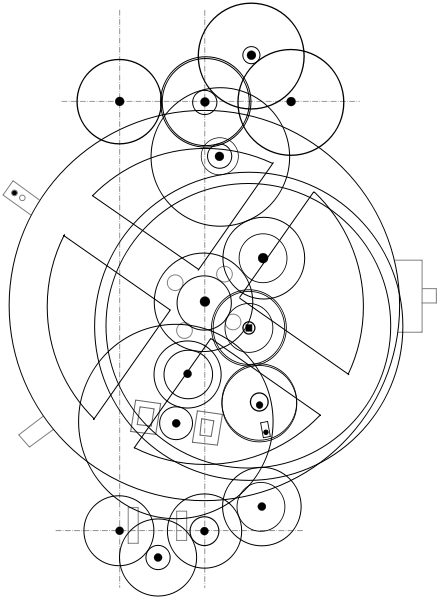Into motions and relations: Metonic cycles with Myung Mi Kim
What won't subsume because time doesn't stand still

“Lamenta,” the longest series in Myung Mi Kim’s fourth collection, Commons (2002), is structured after the metonic cycle, a calendrical unit of nineteen years. A lunisolar measure, the metonic cycle encapsulates the notions of simultaneity, equivalence, and difference. It is the “period of whole days over which the visible lunar and solar periods almost resynchronize” (Dictionary of Weights and Measures). This re-synchronization suggests a confluence between two different measures of time, which can be identified without subsuming one order of measure into the other. Importantly, there is a remainder when these two cycles nearly meet: “the difference between the 236 synodic months and 19 mean tropical years is barely two hours.” A portion always exceeds.
“Lamenta” is organized into five sections, each one dated to measure 19 days. For example, the first section is subtitled “229 / 318,” indicating the span of composition between February 29th and March 18th. In total, there are 45 discrete units that make up the poem — mirroring Kim's age when Commons was published. While she was still developing this poem, Kim stated that she had modified the metonic cycle so that 19 years became 19 days instead (listen to this reading at PennSOUND here). Her reasoning for doing so was one of duration: how many cycles of 19 are available to a human life?
The text of “Lamenta” incorporates fragmented lists, dictionary definitions, romanizations of Korean hangul, and excerpts from historical texts. Kim's mixage of these materials in this series indicates her interest in exploring what constitutes knowledge, in particular attending to what lies just beyond its stated limits. For example, texts that are conventionally considered authoritative, such as a dictionary definition, take on new relevance in a different space. In a poetic space, the various meanings for “mite,” for example, as “a copper coin of very small value,” “a small weight” and “a minute particle or portion” encourages us to recognize the word's historic traversals, which continue to inflect its current meaning. Furthermore, something else exceeds its definitional inclusion, due to the simultaneity, equivalance, and difference invoked by Kim's orchestration of the lines. This difference, excess, or remainder constitutes the field of Kim’s poetry.
There are many things I can say about the genius of “Lamenta” and the way it speaks to our imagination of time, but I‘ll close with this comment: by removing standard markers in the way she noted her dates (how does one recognize 229 and 318), Kim encourages the poem's engagement with time to disappear beneath our interest as readers in the substance of her language. Time is rendered strange and invisible to us. This is an incredibly resonant gesture — given Kim's recognition for how our understanding of time as history has grave consequences for how we continue to structure knowledge and who gets to wield power in the world. The erasure of a tiny mark — in this case, the / which would clarify 229 and 318 as 2/29 and 3/18 for us--obfuscates the contributory power of these marks for understanding the broader schema of “Lamenta.” Its absence illustrates the central role that “minor” elements play in our ability to make sense of the world. To couch this in a discussion of time — what has history erased, removed, or forgotten, and how does this absence affect or obscure our ability to comprehend how we live now?
As a writer chiefly concerned with creating spaces for difference, Kim’s invocation of the metonic cycle in “Lamenta” gestures towards the structures of knowledge production, inviting us to re-order them into equivalent relations. What could possibly structure our notion of the world more strongly than our sense of time? Across cultures and eras, solar and lunar cycles outline human imaginations.
Note: the image above is a schematic of the back of the Antikythera mechanism, an ancient analog computer designed to predict solar and lunar eclipses. It leads me to ask: what systems indicate the ways we imagine the future, and how may language enter and disrupt this equation...
Time text body noise